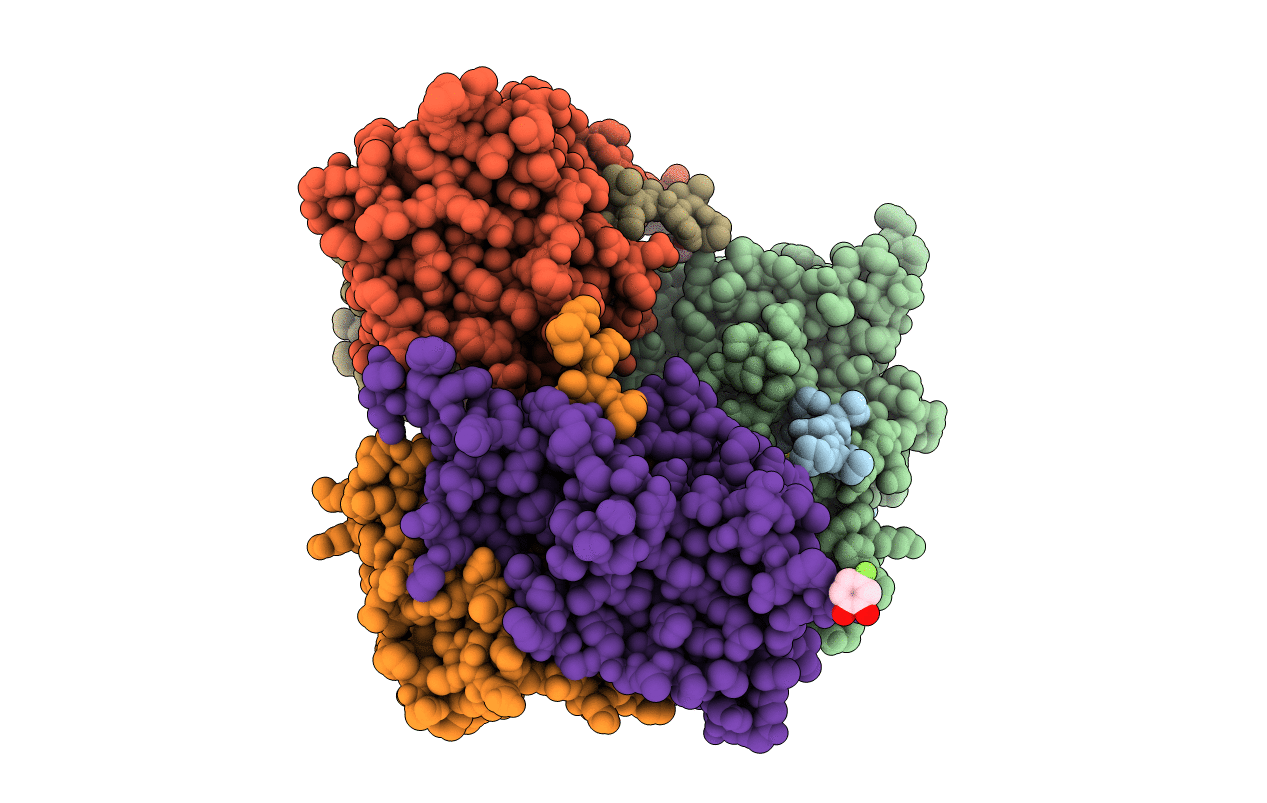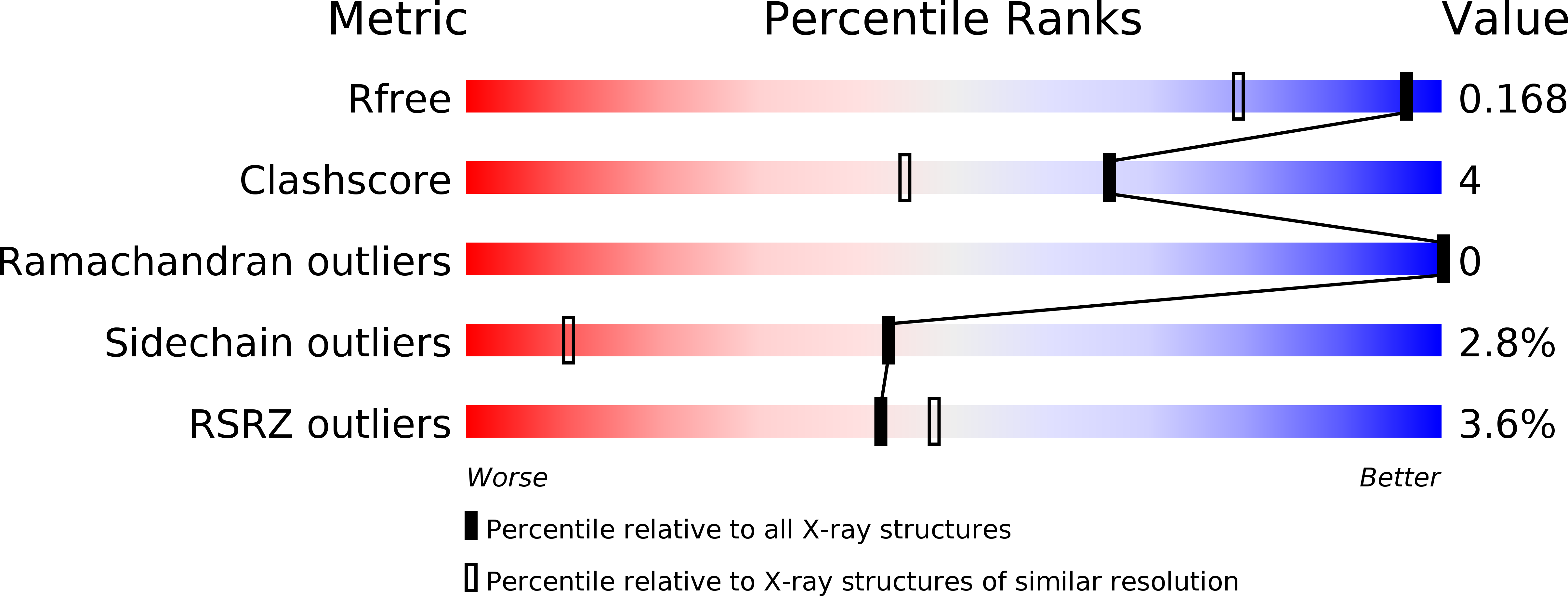
Deposition Date
2014-09-23
Release Date
2014-12-31
Last Version Date
2023-11-15
Entry Detail
PDB ID:
4WHS
Keywords:
Title:
4-fluorocatechol bound to Protocatechuate 3,4-dioxygenase (pseudomonas putida) at pH 8.5
Biological Source:
Source Organism:
Pseudomonas putida (Taxon ID: 303)
Host Organism:
Method Details:
Experimental Method:
Resolution:
1.35 Å
R-Value Free:
0.16
R-Value Work:
0.13
R-Value Observed:
0.13
Space Group:
I 2 2 2


